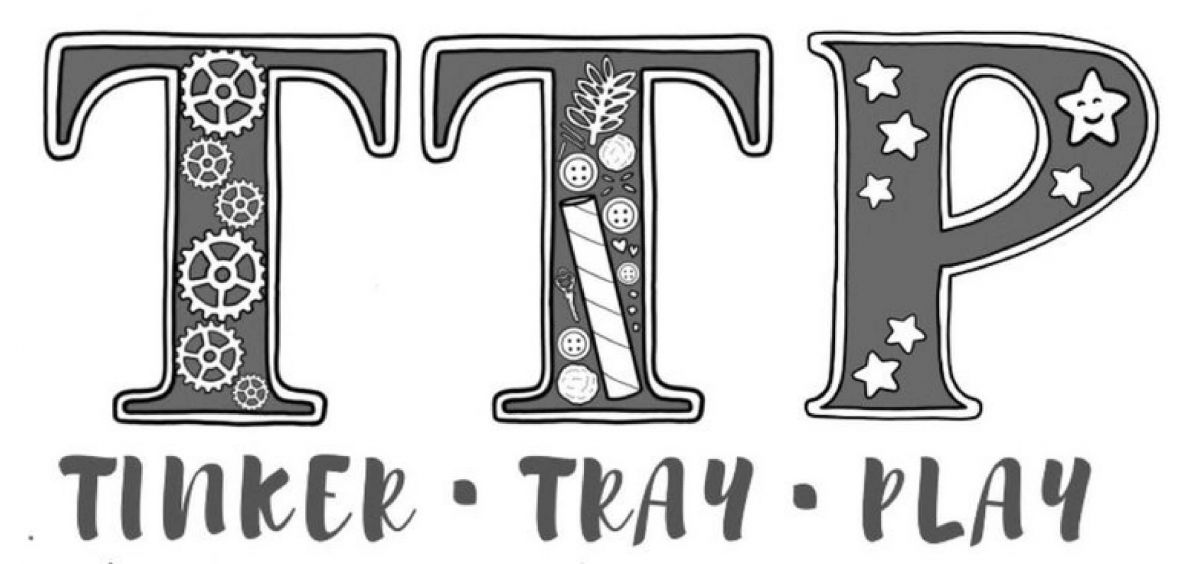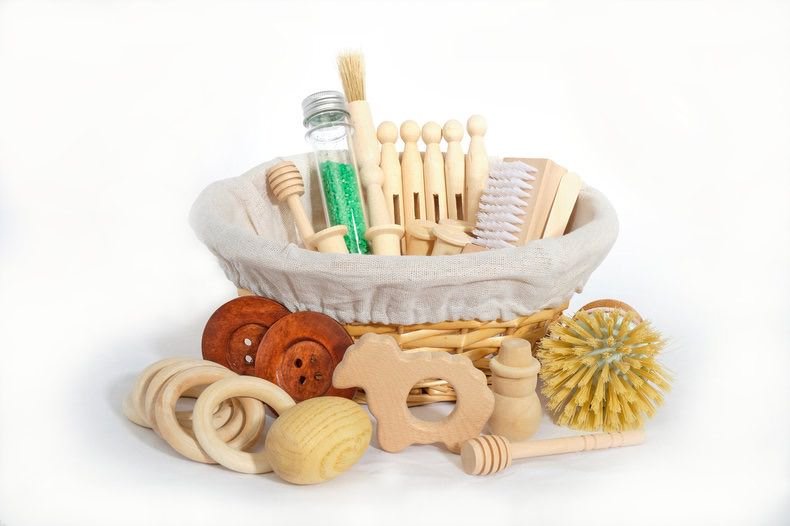My first Treasure Basket encounter was as a new mum at a baby class run by my local children’s centre… and I didn’t get it. I remember wondering why on earth they were passing round baskets full of strange household items, and not toys. Surely funding constraints weren’t as bad as all that? Unfortunately they were and my local children’s centre no longer exists, but that wasn’t the reason behind the basket of ‘stuff.’ What I know now is that the exploration of everyday objects by babies and very young children is an accepted approach to early years learning called heuristic play; by definition “enabling a child to discover or learn something for themselves.”
The Treasure Basket became a popular method of heuristic play following the publication of Elinor Goldschmied’s book People Under Three. She writes about the purpose and benefits of heuristic play and gives a set of guidelines for using heuristic objects with different age groups; a Treasure Basket being the preferred method for children under the age of two.

So what is a Treasure Basket?
A Treasure Basket is a collection of items chosen to provoke curiosity in babies and very young children. The items they contain are commonplace everyday objects that a baby can explore safely. A good basket will stimulate the senses by providing a variety of shapes, textures, smells, sounds and even tastes to provide a rich learning experience. The intention is to provoke curiosity and provide a unique sensory learning environment. Goldschmied was of the firm opinion that “none of the objects in the basket is a ‘bought toy’” (Goldschmied, p87) and “unlike a bought toy that remains the same until it is outgrown or broken, a Treasure Basket should be constantly changing and evolving” (Goldschmied, p90).
How do we play with a treasure basket?
An adult should present the Treasure Basket to the baby and then retreat to a nearby location to observe. Ideally babies will be in a happy, alert mood, preferably not hungry or tired. They should be in a comfortable sitting position, able to lean against something if so required. Babies use their senses to understand the environment around them and will often handle and mouth any objects that they encounter. This is perfectly fine and to be encouraged.
It is important that babies are allowed to explore the basket in their own way and in their own time, to make their own choice of which object to select and how to explore it. Adults must be unobtrusive and resist the urge to ‘show’ the items to baby.
“Perhaps one of the things which an adult may find it difficult to do at first is not to intervene, but to stay quiet and attentive”
Treasure Baskets are to be presented to the child for a limited amount of time only, approximately 30-40 minutes, depending on the level of engagement shown by the child and should then be put away. If it’s accessible all the time the items will lose their intrigue.
What will babies learn from a Treasure Basket?
Babies gain a variety of skills and experiences from a treasure basket:
-
Physical development from sitting up unaided to play.
-
Fine motor skills and hand eye coordination by grasping the objects and bringing them to their mouth. This action is part of their sensory motor development too. Handling and mouthing objects to understand its physical properties stimulates growth of the brain.
-
Focus and concentration as they play for an extended period of time.
-
Independence through selecting items from the Basket unaided.
-
Numeracy as they begin to categorise and sort objects.
-
Literacy with the acquisition of new language and the narratives that may accompany their play.
-
They also learn about the physical world around them and the properties of different types of object.
“The concentration of a baby on the contents of a Treasure Basket is one thing that astonishes observers seeing it for the first time”
Here are my tips for creating your own Treasure Basket
-
Use as many open ended everyday objects as you can find
-
Be imaginative; try to see the element of wonder in all of the objects that you choose. For example, to us a metal spoon is a simple somewhat boring object; to a baby a metal spoon is shiny and reflective, hard and cold, smooth and sleek, solid and heavy, full of intriguing properties.
-
To strictly adhere to the Treasure Basket guidelines the basket must be a fixed size and style, and the contents must meet certain criteria including no bought toys and no plastic. I think its ok to mix it up a bit, use what you have, and have fun with it but always have safety in mind. By their very nature, heuristic objects are household items and not toys so it’s important that all Treasure Basket play is risk assessed and supervised by a responsible adult. Think about the size of the items you are using and whether or not they pose a choke hazard, you can buy choke test canisters to size test objects for use by children under the age of
-
3. Are you using anything sharp or pointy that might cause harm, do you have any metals that might not be safe for babies to put in their mouths, are all of the items clean and has the condition of any natural products deteriorated.
The look of wonder on a babies face when they’re given a new basket to explore is simply priceless. Why not have a go!
You can buy ready made Treasure Baskets from Tinker Tray Play at www.tinkertrayplay.co.uk, or you can choose an empty basket and make your own selection of items from the Treasure Basket Top Up range and the Household Loose Parts range, and don’t hesitate to get in touch with any bespoke requirements! Happy tinkering 💕


Nice post. I was chеcking сontinuously this blog and І
am impressed! Ⅴery helpful information speϲifically the last part 🙂 I care for
such information mucһ. I was looking for this certain info for a long time.
Thank y᧐u and best of luck.
Thank you and you’re very welcome. I’m glad you enjoyed reading it 🙂